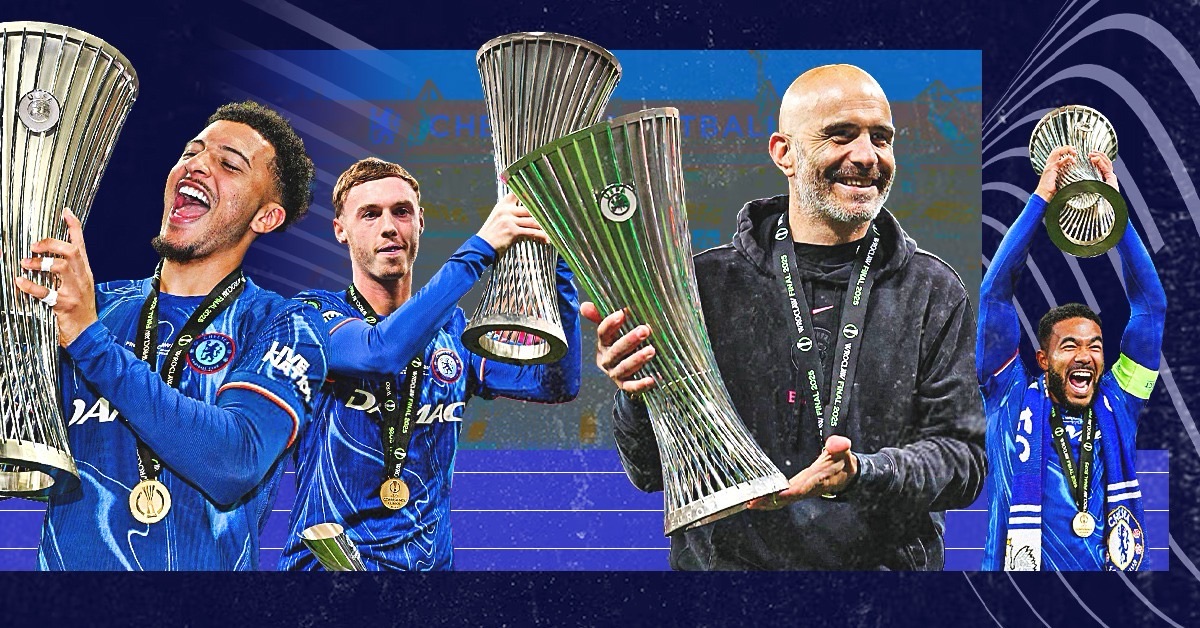The goalkeeping position has been a persistent and irritating problem for Chelsea ever since the £72 Million signing of Kepa Arrizabalaga.
Chelsea have bounced between goalkeepers, going from Kepa to Caballero to Kepa to Mendy to Kepa to Sanchez to Petrovic, all in the space of 6 years.
Similar inconsistency took place in the 23/24 season, with Sanchez being a seemingly nailed on starter even in cup games, and Petrovic not starting once until Sanchez’s injury.
A penalty shootout masterclass against Newcastle in December saw Petrovic keep himself as starting goalkeeper till the end of the season.
Sanchez, upon returning from injury started FA cup games up until the semi final when he was injured again.
Both keepers had been criticised on numerous occasions for their poor distribution, with Sanchez directly being at fault in the Arsenal game where his error set Arsenal on their way, forcing a draw from being 2-0 down.
Petrovic has, similarly, been criticised for his poor distribution contributing to us being unable to progress in the first phase of play as he opts frequently to boot the ball long.
This, in turn, results in the other team easier sustaining pressure. In contrast, Sanchez has been criticised for his obsession with choosing shorter, risky passes putting the team under pressure as well.
All modern day managers and teams tend to desire a keeper that is:
- Commanding of the box
- A good shot stopper
- Extremely confident with his feet
- Has the awareness and intelligence to command the ball and choose when to make certain passes.
It has, however, become apparent to most people and clearly Enzo Maresca that neither of these keepers satisfy all of these needs.
Robert Sanchez is, and mostly has been, an average shot stopper, with decent distribution and a relatively good command of his box.
His long ball distribution (40 yards plus) in the 2023/24 season lies as 4th best in the league only behind Ederson, Matt Turner and Matz Sels.
He also sits 5th best only behind Raya, Martinez, Turner and Ederson for crosses stopped indicating he commands his box relatively well too.
He also sits at 13th (out of 25) in terms of shot stopping with -0.05 PSxG-GA/90, effectively meaning he’s slightly saving less than he should be.
The chart above compares Robert Sanchez’s shot stopping compared to goalkeepers of the traditional ‘top 6’ teams. As we can see, he has performed worse than their average PSxG-GA/90 throughout the last three seasons.
If you were to compare his numbers to the rest of the league, he’s comfortably average.
He is, through the nature of the eye test, a more than competent shot stopper and I myself would argue slightly above average.
One of his most impressive saves was against Erling Haaland in the brilliant 4-4 box office draw at Stamford Bridge.
Sanchez utilises the technique known as ‘sweep leg’ in which his leg nearer to where the ball is going is brought inwards towards his body allowing him to get down faster and make a save with his arms.
Opta’s goalkeeping model had this as a shot goalkeeper’s saved around 63 times out of 100, though another model assessed the shot to be a shot only saved around 51 times out of 100.
Either way, it’s a shot that poses reasonable difficulty. It’s also a shot that most top 6 keepers would save, and not keepers outside of the top 6.
According to the other model, Sanchez has seen relatively impressive performances against Aston Villa at home (despite being at fault for the Watkins goal), against Manchester United and against AFC Bournemouth.
Overall, his PSxG-GA/90 numbers were in the positives in other models, and after going through every single save through the eye test I would be inclined to agree.
We will address the discrepancy between Opta’s model and everyone else’s, and also why using data to judge goalkeepers is problematic.
Petrovic is seen, as well, as a more than competent shot stopper with the potential to be a great one. Unfortunately, he just hasn’t shown this yet and the numbers do in fact back it up.
Petrovic ended the season on -8.93 PSxG, meaning he conceded around 9 goals more than he should’ve (according to Opta).
When looking at other models Petrovic has indeed underperformed, though not on such a drastic level.
Notably, Petrovic performed poorly against Burnley and Manchester United and was to blame for at least two of the goals conceded.
His distribution statistics aren’t great either being in the bottom 6 for launched pass completion at just 31.3%.
He also isn’t great aerially in his box stopping just 6.4% of crosses seeing him 14th (/25) in the league at that aspect.
Petrovic is however a keeper that’s easy on the eye. He makes some very good saves and you rarely look at a goal and think it’s his fault.
Even a very good goal from Jefferson Lerma when Chelsea beat Crystal Palace 3-1 did not, at first, appear to be his fault until Petr Cech pointed out Petrovic’s positioning choice.
Petrovic, instead of stepping up off his line, opted to stay there and set. I agree with the assessment and think his decision was non-optimal.
Despite this, I don’t think that stopped him from saving it. Petrovic also failed to take a well defined power step.
He began his shuffle before diving fairly late and then didn’t move enough before taking his power step to dive. A power step is the step used by a goalkeeper to generate as much energy and well, power to dive and get as much reach as possible in said dive.
I don’t personally think Petrovic’s power step was defined enough as he did not sort his feet out quickly enough to enable a more defined and effective power step.
Due to the poor footwork and power of shot, he’s forced to dive and he doesn’t have enough reach to save the shot. If he’d pushed up off his line as Cech suggested? He would likely still save the shot even with the dodgy footwork.
It’s important to note that Petrovic is on the receiving end of a non-beneficial situation as a goalkeeper as models can’t really quantify goalkeeping quality.
While yes, his shot stopping has not been excellent, it’s been good enough for his first real season at top level football.
His distribution and general command of the box needs work, for sure, but he is a young goalkeeper that can definitely improve in both these aspects in the future.
They’re arguably the two attributes goalkeepers can most improve in as they age, unlike shot stopping. Shot stopping models are also inherently flawed, especially Opta’s which doesn’t take into account velocity or obstacles or even deflection.
Petrovic has underperformed yes, but the widely known number of around -9 is heavily inflated.
The numbers to judge his distribution and command of the box are also vastly variable as just because he didn’t stop a cross does it mean he’s really actually bad at commanding his box?
I personally think there’s still much left to be desired but that’s from the eye test, something I believe everyone should still resort to when judging goalkeepers.
In this sense, it is perhaps a strange move to bring in Filip Jorgensen, though it is clear that in terms of style of play, he fits Enzo Maresca better than both.
Harsh or not, Jorgensen is deemed internally as a better fit than Petrovic, and some at the club are eager for him to become the number one and take over Robert Sanchez.
If Jorgensen becomes a staple in the team this season, and Enzo Maresca gets past one season in charge, unlike Pochettino and Potter, no one should have any complaints.
However, if things turn south and Jorgensen is not a clear upgrade on Petrovic with all atrributes considered or indeed underperforms, heads would surely have to roll in the goalkeeping decision making department.





